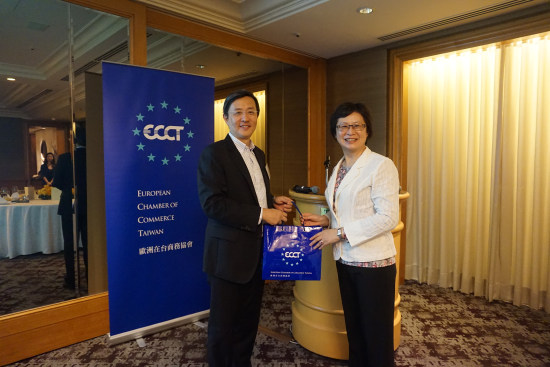Taiwan and the TPP

Dr Lee began by noting that while the Trans-Pacific Partnership (TPP) deal has been signed by the leaders of 12 countries (the United States, Australia, Brunei, Canada, Chile, Japan, Malaysia, Mexico, New Zealand, Peru, Singapore and Vietnam), there is a lot of uncertainty surrounding the trade deal at the moment because it has yet to be ratified by the United States, given widespread opposition or reticence towards the deal, including by the two main presidential candidates and the US congress. The TPP signatories are required to ratify the deal by February 2018 (24 months after signing). Taiwan is one of several countries seen as potential candidates for the second round of TPP membership along with South Korea, The Philippines, Indonesia and Thailand.
According to Lee, Taiwan is more focused on domestic issues than external trade at the moment while much of the focus of international trade efforts is the new government's "go south" strategy, which is aimed at boosting ties with South East Asian countries (which also extends to India, Sri Lanka and Australia).
Taiwan is a trade-dependent country with a trade dependency rate that is significantly higher than those of China, Japan and South Korea. The value of Taiwan's exports in 2015 was equivalent to 74% of GDP. If imports are added, this percentage rises to 140%. By comparison, the trade dependence ratio is only 29% in the United States, 32% in Japan, 76% in China and 107% in South Korea. (Lee stressed that these figures only cover products actually made in Taiwan, not products made by Taiwanese firms overseas, which are substantial.) The trade dependency ratio shows that Taiwan is more vulnerable to changes in the global trade and investment environment than other countries.
Furthermore, Taiwan's trade and investment status faces at least three major structural challenges, namely market concentration, product concentration and a lack of investment momentum. In terms of trade concentration, since close to 40% of Taiwan's trade is with mainland China (including Hong Kong) and another 18.5% with ASEAN countries, the lack of diversification makes Taiwan even more vulnerable to potential future slow-downs in these countries. South Korea, for example is much less dependent on a single trading partner.
In terms of product concentration, around 50% of Taiwan's exports are concentrated in electronics and machinery. Once again, the lack of diversity makes Taiwan vulnerable to slow-downs in these segments or increased competition. Lee noted China's support of its industries through import substitution (or local content) policy requirements. This has already had a severe impact, for example, on Taiwan's TFT-LCD panel industry. Given huge state funding support, it seems clear that Chinese authorities want to do the same in the semiconductor industry.
According to Lee the lack of investment is another serious challenge. While Taiwan's rankings in several international competitiveness surveys seem to indicate great progress, investment momentum in Taiwan by both local and foreign investors has stagnated in recent years as Taiwanese investors have invested heavily overseas. [Europeans, which have increased investments in Taiwan in recent years, appear to be the exception rather than the rule].
According to Lee, the situation for Taiwan is likely to worsen if it is excluded from the TPP. TPP membership would not only give Taiwan better access to the markets of other TPP members (through the removal of both tariff and non-tariff barriers) but would also offer external impetus to accelerate the domestic reform process.
The TPP aims to create a 21st Century market/regulatory environment that is coherent and transparent. A key feature of the TPP is that it goes beyond tariff and non-tariff barriers to include "across the border transactions", for example related to talent and data flows.
As a TPP member Taiwan would be obliged to move from political-based to evidence-based decision-making and enhance accountability and consistency of regulations. This, according to Lee is crucial to Taiwan's efforts to shift from a traditional economic structure to become a creative and innovation-centered economy and to attract investment.
The TPP includes behind the border disciplines on the processes and (to a lesser degree) content of domestic law and policy. For example, in the section on sanitary and phytosanitary (SPS) measures, if a TPP member's SPS measures do not conform to international standards, guidelines or recommendations, they have to be based on documented and objective scientific evidence. Moreover, fellow TPP members have to be given the right to comment on risk analyses while each member has to consider risk management options that are not more trade restrictive than required. Measures such as there are aimed at bringing a much greater level of mutual oversight over and harmonization of the regulatory systems of TPP members.
TPP member are also required to publish proposed regulations and provide a period of 60 days for comments by other parties. Moreover, they have to consider the comments and explain any significant changes made to proposed regulations.
While compliance with TPP rules could be seen as an administrative burden for TPP member authorities, the benefit of greater regulatory harmonization among TPP members is that it would be easier for TPP members to do business in fellow TPP member states. This factor alone offers a good argument for Taiwan authorities to follow TPP rules, regardless of their membership.
